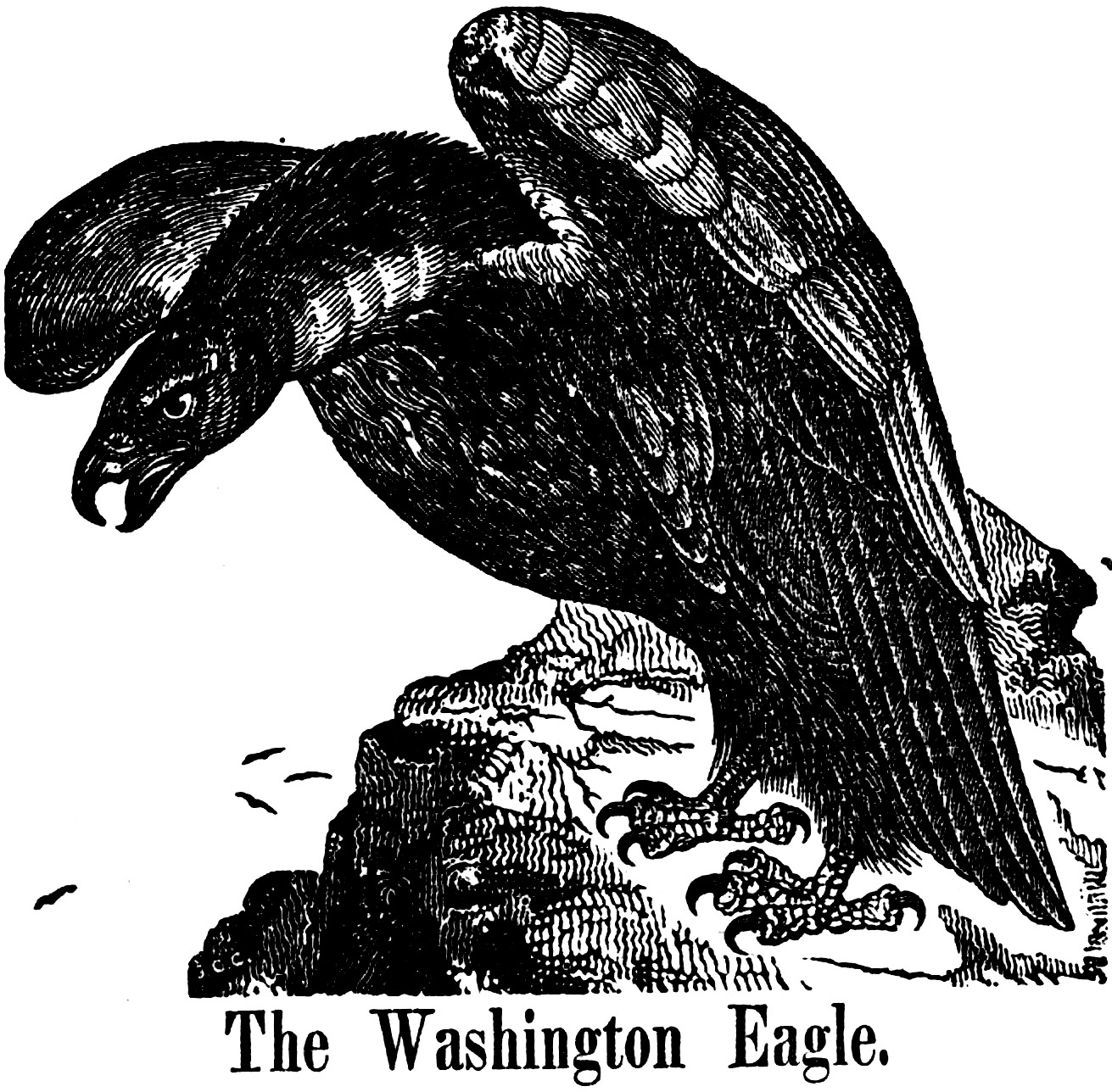Washington Eagle

Merry's Museum, S.G. Goodrich editor, Vol IX, No. 4, April 1845, Pages 125-126.
The naturalist Audubon, while travelling in Kentucky, being informed that there was a nest of a large eagle on or near the top of some nearly perpendicular rocks, was curious to know what species it might be, as those with which he was acquainted do not build in such situations. He was told, also, that these birds obtained fish by diving, instead of robbing the fish hawk, like other kinds of eagles. Being informed that the old birds would come and feed their young with fish, he seated himself in high expectation, about a hundred yards from the foot of the rocks, with the persons who had given him the information. The following is his narrative:
“Two long hours had elapsed before the old bird made his appearance, which was announced to us by the loud hissings of the two young ones, who crawled to the extremity of the hole to receive a fine fish. I had a perfect view of this noble bird, as he held himself to the edging of the rock, with his tail spread, and his wings partly so, and hanging something like a bank swallow. I trembled lest a word should escape from my companions - the slightest murmur would have alarmed the bird; but they entered into my feelings, and, although little interested, gazed with me.
“In a few minutes, the other parent joined her mate, which, from the difference in size - the female being much larger - we knew to be the mother-bird. She, also, had brought a fish; but, more cautious than her mate, ere she alighted, she glanced her quick and piercing eye around, and instantly perceiving us, she dropped her prey with a loud shriek, which communicated her alarm to the mate, and, hovering with him over our heads, they kept up a growling, threatening cry, to intimidate us from our suspected design. This watchful solicitude I have ever found peculiar to the female.
“The young having hid themselves, we went and picked up the fish which the mother had let fall. It was a white perch, weighing about five and a half pounds. The upper part of the head was broken in, and the back torn by the talons of the eagle.
“Being most anxious to procure both the old and young birds, I engaged my companions to return with me the next day; but, rainy and tempestuous weather setting in, our expedition was necessarily postponed until the third day, when, with guns, &c., we repaired to the rocks. But we passed the whole day without seeing or hearing an eagle, the sagacious birds having, no doubt, anticipated an invasion, and removed their young to fresh quarters.”
Two years after the above disappointment, the naturalist had the satisfaction of killing a bird of the same kind; and finding it a new species, he called it the bird of Washington, it being, indisputably, the noblest of the genus known to naturalists.
The Washingotn Eagle (PDF)